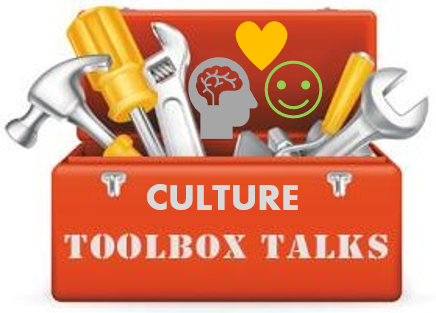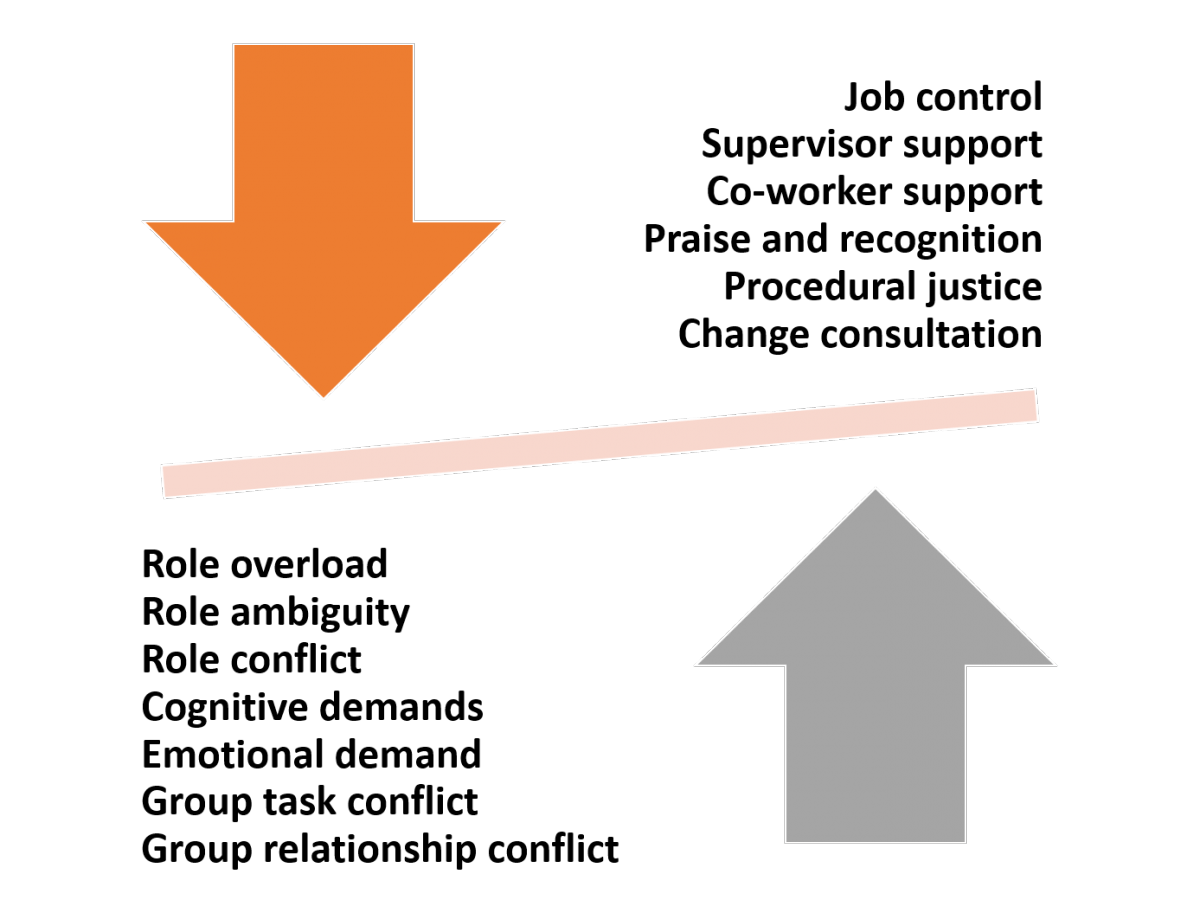Intentional conversations are based on conscious design of the purpose, with forethought given to context and timing. Planned to happen in a setting and way, that is purposeful. In sharp contrast, Make It an Intentional Conversation share how ‘unintentional’ conversations can run off the rails. When voicing issues or concerns, “erupts out of frustrations, like a balloon that is holding too much hot air, this conversation pops when least expected sometimes causing irreparable damage.
No-one involved is prepared to deal with this situation at this time. When it comes about suddenly words might be spoken that were never intended but the heat of the moment bubbled them to the surface. More often than not, this conversation doesn’t bring about the desired results of bringing people together. On the contrary, it tends to widen the gap.”
Habit #1 Intentional Performance Conversations about Values and Culture.
Does Your Company Actually Live Its Values? unsurprisingly states “any effort to align values with actions needs teeth.” Bernard Banks, clinical professor of management and associate dean for leadership development at the Kellogg School, Northwestern University, and a retired U.S. Army brigadier general, agrees.
“Many performance-evaluation systems say they examine more than just the task itself. But the reality is lots of organizations do not apply the same level of scrutiny to examining the ‘how’ as they do the ‘what.’
Make articulating and reflecting on values a habit and develop a way to measure how well they are acted upon. Such measurement can be done as part of employees’ performance evaluations—so long as the exercise is taken seriously.”
“You and your employees need to examine how they are treating others,” Banks also says.
“Strong organizations actively seek out feedback from anyone who comes into contact with that organization, to point out where it is coming up short.”
Wilson Asset Management gives a shareholder perspective. “A positive, values-driven culture creates a range of benefits and financial upsides that give companies a powerful competitive advantage relative to their peers. With a company’s long-term sustainability and financial success largely dependent on management’s success in developing and enhancing its culture, it is essential investors evaluate this factor.”
Alison Davis, CEO at Davis & Company, recommends a
“a simple approach for evaluating culture so you can enhance the way employees work together,” includes determining “the current state of culture on three levels: individual, team and organizational.”
Case Study | Fergal Brethony, founder of 1872 Culture has been helping financial service organisations in Ireland create intentional conversations about values and culture, as part of performance management. Brehony explains the analytic capability of 1872° Performance, a cloud-based performance management tool. “All data – from staff, customers, the board, and performance management (the views of an individual and their manager, on the staff member’s values, behaviours and personal KPI’s) – is cross-correlated. Final outputs include organisational, team and individual performance scores.”
Following is what staff anonymously score, as their temperature check on Culture, Leadership and Compliance, at the fictional Outback Bank. Taking only a few minutes to complete, the power is the intentional conversations that follow, discussing the reasons behind scores, and differences in scoring from various sources (self, manager, staff, customers). To agree a final score.
Here’s the 1872 performance conversation experience between Stavros – a manager – and his manager Usagi, at our fictional Outback Bank.
Habit #2 Intentional Questions in One-on-One Conversations to be inclusive, caring, trustworthy and respectful
1. Many one-on-one meetings in workplace environments, especially between a manager and staff member, usually open with the question “How’s it going?” Claire Lew, CEO of Know Your Team. recommends replacing this question with “How’s life?”
“How’s life?” helps you learn more about how someone is doing in their whole life, not just work.”
2. Lew also recommends replacing “What’s the latest on __?” in meetings between a manager and a staff member, with “What’s been most surprising about working on X so far?” or something along those lines.
Instead of a status update on tasks, focus on building trusting and respectful relationships during precious one-on-one time with a staff member. Gaining insights into “deeper, messy team dynamics, unspoken personal frustration, unearth what’s actually going on in your team, and what an employee is thinking and feeling.”
Habit #3 Intentional Conversations about Hazards and Risks to an Organisation ‘Living its’ Values’

SafeWork Australia refers to regular ‘toolbox talks’ as “established ways of talking to its workers, including volunteers, about occupational health and safety (OHS).” Typically occurring in industries with significant physical hazards, do many people interpret OHS hazards as including the following?
“How work is organized, social factors (including workload, work hours, victimization, harassment and bullying), leadership and the culture in the organisation.”
This quote is from ISO/FDIS 45001O Occupational health and safety management systems, S. 6.1.2.1 Hazard identification, of what certified organisations must include in ongoing, proactive hazard identification. Australian OHS legislation likewise requires organisations to proactively manage psychosocial hazards and risks, as they do physical ones.
From 2020, ASX Corporate Governance Principles and Recommendations 4th Edition start taking effect, with all listed entities in Australia needing to answer ‘if not, why not’, to:
- “a listed entity should instil and continually reinforce a culture across the organisation of acting lawfully, ethically and responsibly.”
- “The board should approve an entity’s statement of values and charge the senior executive team with the responsibility of inculcating those values across the organisation.”
According to Moral Issues in Business, moral and ethical standards “concern behaviour that has serious consequences for human well-being, and they take priority over other standards, including self-interest.”
Case Study | People at Work enables regular intentional conversations about hazards and risks to culture, “a living, breathing organism that emerges from the social and psychological environment within your company.” Providing a psychosocial – “the interrelation of social factors and individual thought and behaviour“ – risk assessment process, that is available at no cost to Australian organisations.
It’s based on the research collaboration established in 2007 among Queensland University of Technology, The Australian National University, Workplace Health and Safety Queensland, WorkCover NSW, WorkSafe Victoria, Comcare, Safe Work Australia, and beyondblue.
Helping organisations identify and manage hazards, it includes resources to support focus groups having intentional conversations about evaluating the effectiveness of chosen, needed interventions.

“People at Work survey measures hazards based on a comprehensive review of job demands and job resources that have been studied in occupational health literature. High levels of job demands and low levels of job resources increase the risk of psychological harm.”
Following is a video case study of a People at Work experience, including outcomes of holding weekly, intentional conversations.
Intentional Actions
Values and culture are often thought of as intangible. Value-based intentional actions are about making the silent, loud, and the unseen, visible.
Habit #4 Intentionally Making the Unseen, Visible
How many times a day do work colleagues walk past you, without ever acknowledging you? How often do you do the same?
How often have you been in a crowded lift full of colleagues, in total silence, with all eyes firmly focused on the lift doors and floor indicator, or on mobile phones?
Being ignored and unacknowledged, drive feelings of exclusion and isolation. Intentional actions to make values – such as inclusion, and respect – visible, can be a simple as catching the eye of colleagues, and smiling.
” It is the human condition to be connected. By lending a smile, you are reaching out to your fellow man and connecting.”
Habit #5 Intentionally Making the Silent, Loud
How many times when working at home, or remotely, do you go a whole day without talking with a work colleague? How many times, instead of talking with a colleague, do you send an email or text instead?
As Don’t Send That Email. Pick up the Phone! highlights “while we may think we’re being more efficient, relying on just email can have the opposite effect.” Misinterpretations of tone, language and therefore intent, potentially lead to conflict and lengthy email chains.
“With email it is hard to get the feelings behind the words.”
The simple act of picking up the phone, or better still, a quick catch up or video call with colleagues, are more ‘human’, rich connections. A Face-to-Face Request Is 34 Times More Successful Than an Email, found trustworthiness and the legitimacy of any requests were magnified in face-to-face meetings, comparative to emails.
To ‘live the values’ of inclusion, collaboration, trust and respect, make an intentional habit of considering meeting, talking and video calls with a colleague, the best first options. As Leandro Herrero says,
“Culture is the smile of the receptionist, the way a nurse introduces herself in a hospital, the hotel room service, the speed of a reaction to a complaint. The size of your inbox is also culture, the number of meetings per week and per capita is also culture.”
Intentional Thinking
Habit #6 – Making Intentions on Values, Real
Workplace values have real power, if they connect us to our human values.
After all, ‘culture’ comes from the Latin ‘cultus’, which means ‘care’, and values are those things we ‘care’ about.
For employees to ‘live the values‘ of an organisation, people have to care about them to make them a reality.
Case Study | Barry-Wehmiller Paper System makes machines that make different types of packaging. Each machine is custom-made, and Lean Manufacturing was implemented to instil continuous improvement as part of increasing competitiveness. But Brian Wellinghoff says, “If I had to do it all over again, I would have started by building the culture first.”
Their concept of culture is founded on four values – Compassion. Integrity. Consistency. Competence. “Most businesses would start with competence, at BWPS compassion comes first. They believe that good people will give you good performance.”
“We develop people from the inside out.”
BWPS lean manufacturing is “using your heart” and system thinking, to problem solve.
“Caring leads to better ideas.”
Habit #7 – Intentional Values-based Decision Making
In Are leaders making decisions based on moral principles? asks the question, “How often are leaders and managers asked to explain how their actions, decisions and the changes they introduce, are moral and values-based? Cognitive, emotional and technical intelligence are important for leaders, but moral intelligence is what guides IQ, EQ and TQ, and provides meaning.
An intentional moral and value-based decision-making habit, is one that considers any wellbeing costs, always outweigh total benefits.
Summary of The State of Moral Leadership in Business 2019 research and report, also makes a compelling argument for intentional, moral and values-based decision making.


